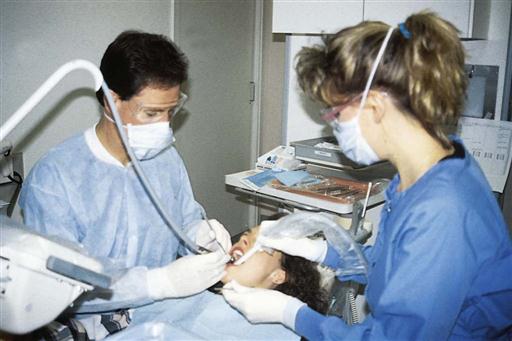Infection Transmission in Dental Healthcare
Reports of transmission of infectious agents between patients and dental healthcare personnel (DHCP) in dental settings are rare. However, a recent Centers for Disease Control and Prevention (CDC) article in the Journal of the American Dental Association[1] identified three published reports describing the transmission of hepatitis B virus and hepatitis C virus in dental settings since 2003. In addition, the Morbidity and Mortality Weekly Report[2]—published April 8, 2016—described a 2015 outbreak of Mycobacterium abscessus infection at a pediatric dentistry practice.
In most cases, investigators have failed to link a specific lapse of infection prevention and control practice with a particular transmission. However, reported breakdowns in basic infection prevention practices included unsafe injection practices, failure to heat-sterilize dental handpieces between patients, failure to monitor (eg, conduct spore testing of) autoclaves, and failure to maintain dental unit waterlines. These reports highlight the need to improve understanding of and compliance with current infection prevention recommendations.
Key information and recommendations relevant to the above identified breaches include:
- When administering local anesthesia, use needles and anesthetic cartridges for one patient only and clean and heat-sterilize the dental cartridge syringe between patients.
- If multidose vials are used (such as for conscious sedation), dedicate multidose vials to a single patient whenever possible.
- If multidose vials must be used for more than one patient, restrict them to a centralized medication area and do not allow them to enter the treatment area.
- If a multidose vial enters the immediate patient treatment area, it should be dedicated for single-patient use and discarded immediately after use.
- Date multidose vials when first opened and discard within 28 days, unless the manufacturer specifies a shorter or longer date for discarding that opened vial.
- Clean and heat-sterilize all handpieces (high-speed and low-speed) and attachments that attach to air and waterlines (including motors) between patients unless they are single-use, disposable items. For handpieces that do not connect to air and waterlines, use US Food and Drug Administration–cleared devices and follow the validated manufacturer’s instructions for reprocessing.
- Monitor sterilizers at least weekly by using a biological indicator with a matching control (ie, biological indicator and control from same lot number). Results of biological monitoring should be recorded and sterilization monitoring records (mechanical, chemical, and biological) retained long enough to comply with state and local regulations.
- Ensure that all dental units use systems that treat water to meet drinking water standards (ie, ≤ 500 colony forming units/mL of heterotrophic water bacteria). Consult with the dental unit manufacturer for appropriate water maintenance methods and recommendations for monitoring dental water quality.
CDC Division of Oral Health

